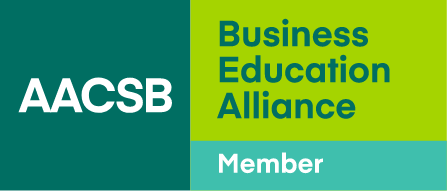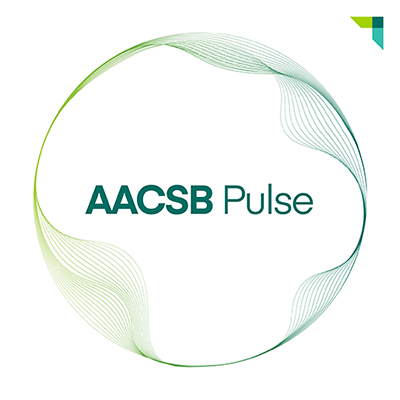Involving Students in Assurance of Learning
Today’s business schools consider assurance of learning (AoL) to be an essential way to ensure that they meet program learning goals. The importance of AoL has been reflected in AACSB’s accreditation standards. Over the years, the focus on AoL rightfully has shifted from measuring the attainment of learning goals to closing the loop—that is, finding ways to address learning gaps.
Yet, many schools still consider AoL a necessary evil—an administrative accreditation exercise—rather than an internalized mindset that leads to a program’s continuous improvement. In my opinion, schools can fully implement continuous improvement only if they embrace it at all levels in a program, particularly at the course level. All instructors must adopt a continuous improvement mindset, not just those teaching courses selected to demonstrate that program learning goals have been met.
A vital part of AoL is recognizing where students have issues in attaining learning goals and where they struggle with understanding content. Instructors need to know whether students are able to conceptually frame course content, what content resonates with them, and how well students assess their ability to demonstrate specific learning goals. For this reason, schools should actively include student perspectives in the process of designing, delivering, and improving program curricula.
Seeking Student Input
In my experience, students value being listened to and taken seriously, so they are very engaged when they’re asked to evaluate the attainment of learning goals. They’re particularly willing to help when they can contribute to discussions about potential areas of course improvement. I have seen how their input has shaped curricula at both the course and program levels. I have described this process in detail in an open-access article, but I will cover the basics here.
As an example, I once worked with students on AoL objectives for a project management course. I defined learning goals at the granular level and wrote each one on an index card. Each card started with the prompt “Upon completion of this course, you are able to” and ended with a specific learning goal, such as “close a project” or “produce a final report.” I then asked the students to sort the cards by creating piles for the goals that belonged together.
Any instructor could use a sorting process to learn how students view a course’s content and structure. Misconceptions, missing conceptual links, and other issues in course design become immediately evident.
Analyzing how the students sorted the cards allowed me to see whether they were able to group similar elements of course content. For instance, students frequently put “close a project” and “produce a final report” in the same pile, which showed me that they understood that both of these tasks related to the project manager’s role. I created a concept map to visualize how frequently statements were placed together, which allowed me to identify seven thematic clusters that described the course content from the students’ perspective.
I believe any instructor could use a similar sorting process to learn how students view a course’s content and structure—and how those student perceptions might differ from the instructor’s ideal. Through such a process, misconceptions, missing conceptual links, and other issues in course design become immediately evident. After discussing those variances with students, an instructor can plan more effectively how to improve the course for future offerings.
For example, in my project management course, students had a hard time placing the index card that said “monitor project progress.” Some considered it part of risk management and planning, some aligned it with evaluating and closing, and others linked it to scheduling. As the class discussed the placement of this learning goal, students began to realize that some objectives bridged various aspects of the course. They also recognized how topics in the course were interconnected.
Rating the Goals
An instructor can get additional input from students by extending their involvement beyond sorting learning goals into related groups. In my project management class, I also asked students to assess the importance of each goal and their ability to demonstrate each one.
First, students evaluated the importance of the goals that related to becoming an effective project manager. They used a four-point Likert scale that assessed every goal on a range from relatively unimportant to extremely important. By calculating the mean values for each statement, I could quickly see which topics students considered to form the core of the course. This allowed me to determine what content I might be able to remove to reduce the students’ cognitive load. But it also showed me that I needed to explain some items better in class to increase their relevance in the minds of my students.
Professors who include student perspectives in their continuous improvement efforts will have a better understanding of how students conceptualize course content and whether they can demonstrate learning goals.
Next, students used a four-point scale to rate the extent to which they were able to demonstrate each learning goal. They completed this exercise at the end of the second-to-last class, when they should have been able to demonstrate all goals. Again, the means for each statement showed me where students were struggling to master content. These results gave me invaluable insights into how to structure the upcoming review session.
This process also provided me with insight into how to develop the course over the long term. By identifying specific areas where students needed more support, I was able to design new teaching cases. When I used those cases the following year, students were better able to demonstrate the attainment of related learning goals, which led to improved performance on their final exams.
Challenges and Rewards
One challenge of seeking student input is that the process of sorting and evaluating learning goals can take a certain amount of class time. In addition, professors will need to understand ideas such as group concept mapping or statistical analysis to visualize content of specific topics. Instructors can use tools such as R-CMap, an open-source solution for concept mapping, or group wisdom, a proprietary solution for engaging teams.
Despite all the effort involved, I have found that students are willing to participate in the process, especially when they know that their perceptions will shape the final review. In my course, we did all sorting and rating in the second-to-last class and discussed all results in the last class, which was also the review session prior to the final exam.
I believe that professors who include student perspectives in their continuous improvement efforts will have a better understanding of how students conceptualize course content, how they rate the importance of various elements, and whether they can demonstrate learning goals. Professors will learn where they need to present content differently or where they need to provide students with added motivation to master a concept. They also will be able to identify any knowledge gaps or misconceptions students had when they enrolled in the class.
Incorporating student perspectives into continuous improvement practices offers an alternative to mainstream AoL evaluation practices. It leads to better course design, more tailored program content, more engaged students, and higher student performance—as well as more rewarding educational experiences for the instructors themselves.






